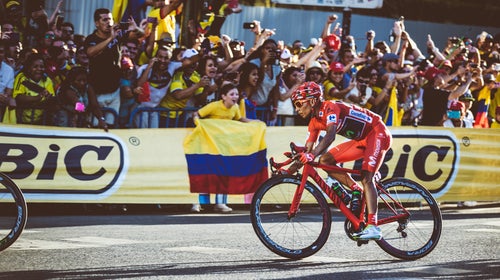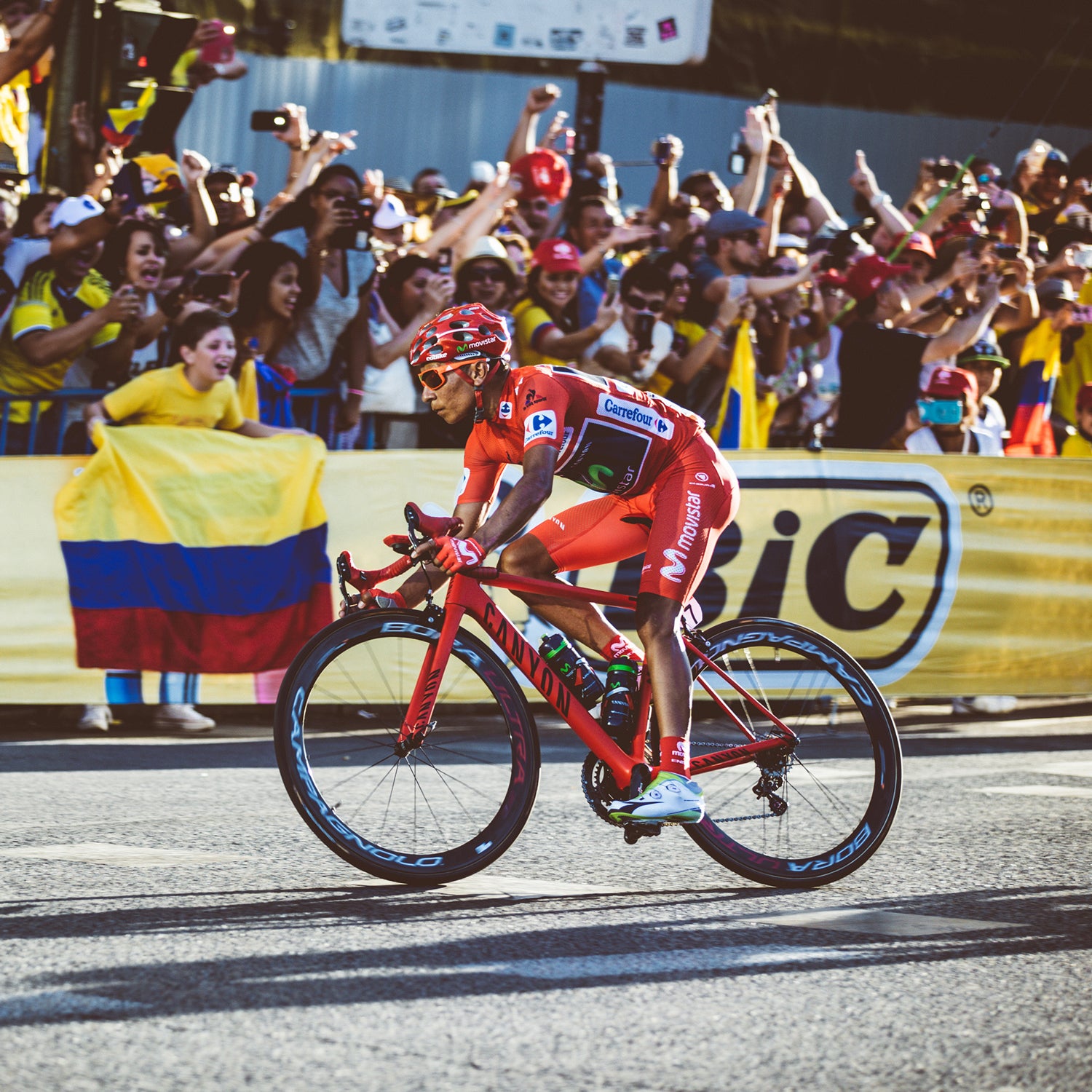The number-one complaint I hear from bike consumers these days: “Why are bikes so expensive?” There are reasons for the big price tags—most notably, innovation and inflation—but those explanations don’t assuage buyers’ feelings that they’re being priced out of good bikes.
Enter , which will begin selling its bikes in the United States this August. The company is on the front line of a trend in the cycling world that aims to deliver high-quality bikes for less by selling directly to consumers online. Canyon has eliminated brick-and-mortar retailers from its supply chain, reducing the overall cost of the bikes by getting rid of dealers’ commissions. It has done away with the middlemen, as well as streamlined the manufacturing, assembly, and shipping processes, and cut out costs involved with inventory and warehousing. The result is that Canyon can sell high-quality bikes for significantly lower prices than some of the heritage bike brands.
“In the majority of our markets, we are generally 20 to 30 percent less expensive than other brands,” says Frank Aldorf, chief brand officer at Canyon. “At the beginning, people were looking at us and thinking that we weren’t on the right path because our business model was so different from the existing model. Now it seems like we are leading the way.”
Online sales are hardly new. Thanks to the likes of Amazon and Apple, consumers are used to buying almost everything online these days. The bike industry is late to the party. Some of that can be attributed to the complexity and high-dollar nature of bikes: It’s hard for consumers to plunk down thousands of dollars for a bike they’ve never seen or ridden. The existing supply chain model for bikes has also made it difficult for larger manufacturers to sell directly to buyers, because doing so risks undercutting dealers and their stores full of inventory.
These hurdles are smaller or nonexistent for Canyon, which has sold only online and direct. The company has no inventory or dealer constraints to negotiate. And while it’s still hard to sell such an expensive item online, consumers are getting more comfortable with the idea. That’s especially true when brands like Canyon make it easy with a 30-day, no-questions-asked return policy and zero restocking fees. Shipping in the United States will cost less than $100, and Canyon will offer a six-year warranty against manufacturing defects.
It’s true that brands like Leopard, Jackal, and current-day have been selling straight to cyclists at reduced rates for years. Even Canyon has been around since 1992*, though the company didn’t start developing its own product until 2002 and selling online until a year later. The real difference here is Canyon’s intellectual property—the company is designing and building its bikes, not just getting them open mold from a factory—as well as its scale. Though it’s a German brand, the company sells in 104 countries and has only postponed its entry to the U.S. market because of tax and legality issues.
Because of those two reasons, Canyon is leading the rebirth in direct-to-consumer sales, trailed closely by a few other upstarts. YT Industries has leaped onto the online mountain bike scene, building top-notch bikes that have won great attention in no small part thanks to the brand’s sponsorship of world champion Aaron Gwin. The top-end Jeffsy Pro trail bike that we tested and loved this season sells for $5,600 versus $10,000 for a comparable Santa Cruz Hightower. “It’s definitely a competitive advantage if you’re 40 percent less expensive than your competitors,” says Cameron Zink, freeride legend and owner of YT North America. Other brands getting in on the direct-to-consumer action include Evil, a mountain bike company from industry veteran Dave Weagle that’s making the excellent Following and Wreckoning models, as well as the recently launched made-in-America Allied Bicycles.
Canyon, like YT Industries and Evil, has also proven that its bikes are as good as anything out there. Movistar (Nairo Quintana and Alejandro Valverde) has ridden them during many UCI Pro Tour race wins, and the Topeak-Ergon team used their mountain bikes at the Cape Epic and Leadville 100. “On a product level, we are on a par with any brand in the world, if not higher,” says Aldorf.
That’s been my experience. A couple months ago, I received a road bike for testing. The first thing that impressed me with the bike was the shipping and packaging: I have received hundreds of bikes over the years, and this one was the best protected and easiest to build of any I’ve ever seen. The build and ride quality on this carbon endurance road bike is also top-notch, including a complete Shimano Ultegra mechanical group, hydraulic Shimano RS685 discs, DT Swiss R24 wheels, and nice touches like clean internal cable routings and the Ergon-esque flex seatpost. The women’s version is fantastic as well.
At an estimated price of $2,900 (U.S. retail pricing hasn’t been finalized), the Endurace is significantly cheaper than, say, a comparably spec’d ($4,000). The ($3,000) and ($3,000) are a lot closer in price, but those models have far inferior wheels and would weigh well more than this Endurace at 17.2 pounds. To get a comparable ride from either of those brands, you’d pay between $4,000 and $4,500. Which is to say, Canyon is selling an excellent bike for between 28 and 35 percent less than the competition. It’s worth noting that brands with their own manufacturing capabilities are much more competitive with Canyon. The goes for $2,700, and the sells for $3,250 with carbon wheels.
Many of the other big brands are scrambling to keep up with the new model. In August 2015, major manufacturer to announce that it would launch its own direct-to-consumer program. Giant followed suit a few months later. “Trek is not a company that sits on the sidelines and waits. We knew that Canyon was coming, and we knew that consumers were buying online. So we decided to act,” says Eric Bjorling, brand communications manager at Trek. These heritage brands face interesting challenges on pricing as their programs must still work in conjunction with their retailers, but Bjorling says they have the advantage of experience and recognition. “Our value proposition is the value we add by being Trek,” he says. “We’re really well known, we’re really well distributed. We are deeply committed to customer service. And we have over 40 years of track record with warranties and treating our customers right.”
It’s probably too early to tell whether consumers are willing to pay more for the experience and credibility of a retail-oriented company that’s been around for years or if they’ll be willing to take the risk on newer brands for a 20 to 40 percent savings. And as more companies explore e-commerce, new models are likely to emerge. “We are focused on performance and democratizing that performance to get high-quality bikes into the hands of more people,” says Canyon’s Aldorf. “But from a broader perspective, I think we’re just one illustration that the whole business is changing. I like to think that we are helping this industry to evolve.”
Any way you cut it, companies selling good bikes at lower costs are a welcome development for consumers. “As competition rises, prices go down,” says Zink. “It’s good for consumers. It’s good for riders.”


